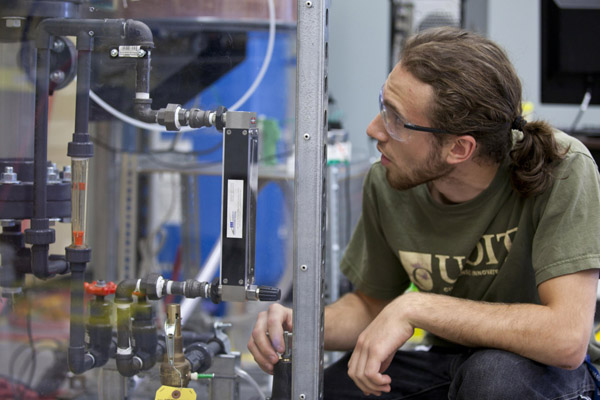Oshawa, Ontario: A new Clean Energy Research Laboratory (CERL) opened at the University of Ontario Institute of Technology (UOIT) in September. The facility has the first lab-scale demonstration of a copper-chlorine cycle for thermo-chemical water splitting and nuclear hydrogen production.
Hydrogen is an energy carrier that produces no greenhouse gases when used. In addition, the techniques under development at UOIT would ensure that no greenhouse gases are emitted by the production of the hydrogen. This combination is why the technology is called clean hydrogen, and why it represents a potentially major solution to the problems of climate change and depleting conventional fuels. However, one of the key challenges is to find a sustainable, efficient method of producing hydrogen in large capacities. UOIT’s Dr. Greg Naterer, associate dean in the Faculty of Engineering and Applied Science, is leading a consortium of more than 30 researchers representing eight universities and industry partners. “Using nuclear, solar or other heat sources such as waste heat from industrial plant emissions, the copper-chlorine cycle promises to achieve much higher efficiencies, lower environmental impact and lower costs of hydrogen production than any other existing technology,” said Dr. Naterer.
The laboratory at UOIT has the first-ever systems at a large lab-scale of a copper oxchloride decomposer for oxygen production, hydrolysis fluidized bed, molten CuCl heat exchanger, and CuCl2 spray drying loop, among others. (CuCl and CuCl2 are two types of copper chloride.) As a direct result of these research breakthroughs by the UOIT-led team, other countries have started copper-chlorine cycle programs for nuclear hydrogen production including France, Romania, South Africa, India and the EU.
The hydrogen laboratory has extensive safety precautions such as 8-inch thick reinforced concrete walls to resist possible hydrogen blasts. The building’s new HVAC system delivers 6 air changes per hour, 600-850 cfm per laboratory. CERL’s partnering institutions include Atomic Energy of Canada Limited (AECL; Chalk River, Ontario), Argonne National Laboratory (Argonne, Illinois, USA), the University of Guelph, the University of Toronto, the University of Waterloo and the University of Western Ontario.
Research conducted at CERL is funded by AECL, Ontario Ministry of Research and Innovation, Phoenix Canada Oil Limited, Canada Research Chairs program, Canada Foundation for Innovation, Natural Sciences and Engineering Research Council of Canada (NSERC), Marnoch Thermal Power Inc., Ontario Centres of Excellence, and the Ontario Power Authority.

